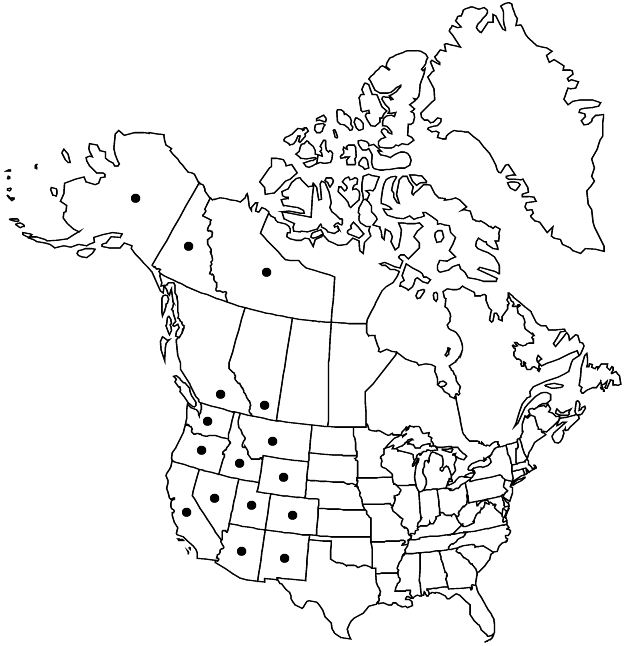Stellaria umbellata
Bull. Soc. Imp. Naturalistes Moscou 15: 173. 1842.
Plants perennial, forming small clumps or mats, rarely long-straggling, from slender rhizomes. Stems erect, branched at base, 4-angled, 5–20 cm (rarely to 40 cm when long and straggling), glabrous. Leaves spatulate-petiolate (proximal) or sessile (distal), bases clasping, connate around stem, ciliate; blade elliptic to lanceolate, 3–9 cm × 1–3 mm, somewhat succulent, base round to cuneate, margins entire, apex acute, glabrous. Inflorescences terminal, (1–)2–ca. 21-flowered, subumbellate, often with 1 or 2 axillary flowers below; bracts lanceolate, 1–7 mm, distal ones entire, scarious, proximal ones usually herbaceous. Pedicels sharply deflexed at base, often curved distally in fruit, 7–20 mm, glabrous. Flowers ca. 2 mm diam.; sepals 5, 3-veined, lanceolate, 2.5–3 mm, margins narrow, scarious, apex obtuse, glabrous; petals absent; stamens 5; styles 3, ascending, curled, ca. 0.25 mm. Capsules straw colored, conic, 3–4.5 mm, exceeding sepals, apex obtuse, opening by 6 valves; carpophore absent. Seeds brownish, round, 0.5–0.7 mm diam., shallowly rugose. 2n = 26.
Phenology: Flowering summer.
Habitat: Moist meadows, rocky summits, gravelly stream- and roadsides
Elevation: 1000-2800 m
Distribution

Alta., B.C., N.W.T., Yukon, Alaska, Ariz., Calif., Colo., Idaho, Mont., Nev., N.Mex., Oreg., Utah, Wash., Wyo., Asia.
